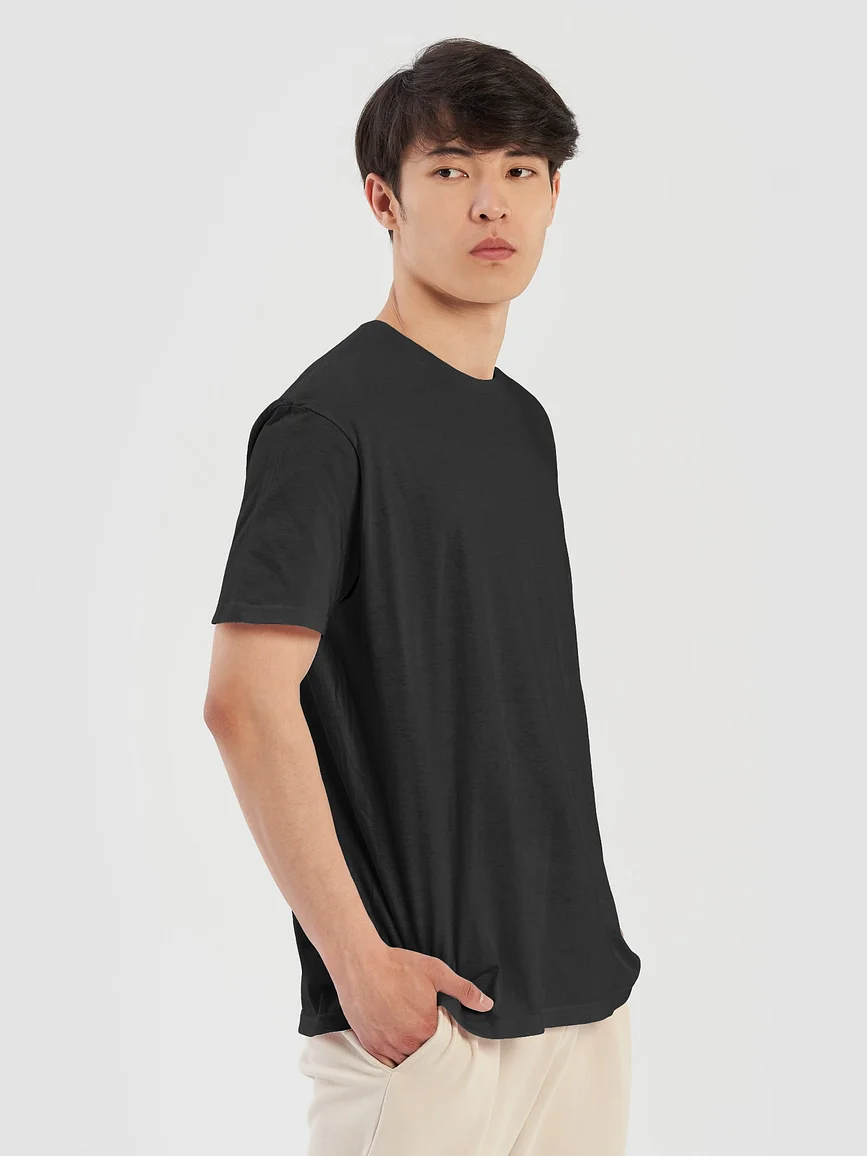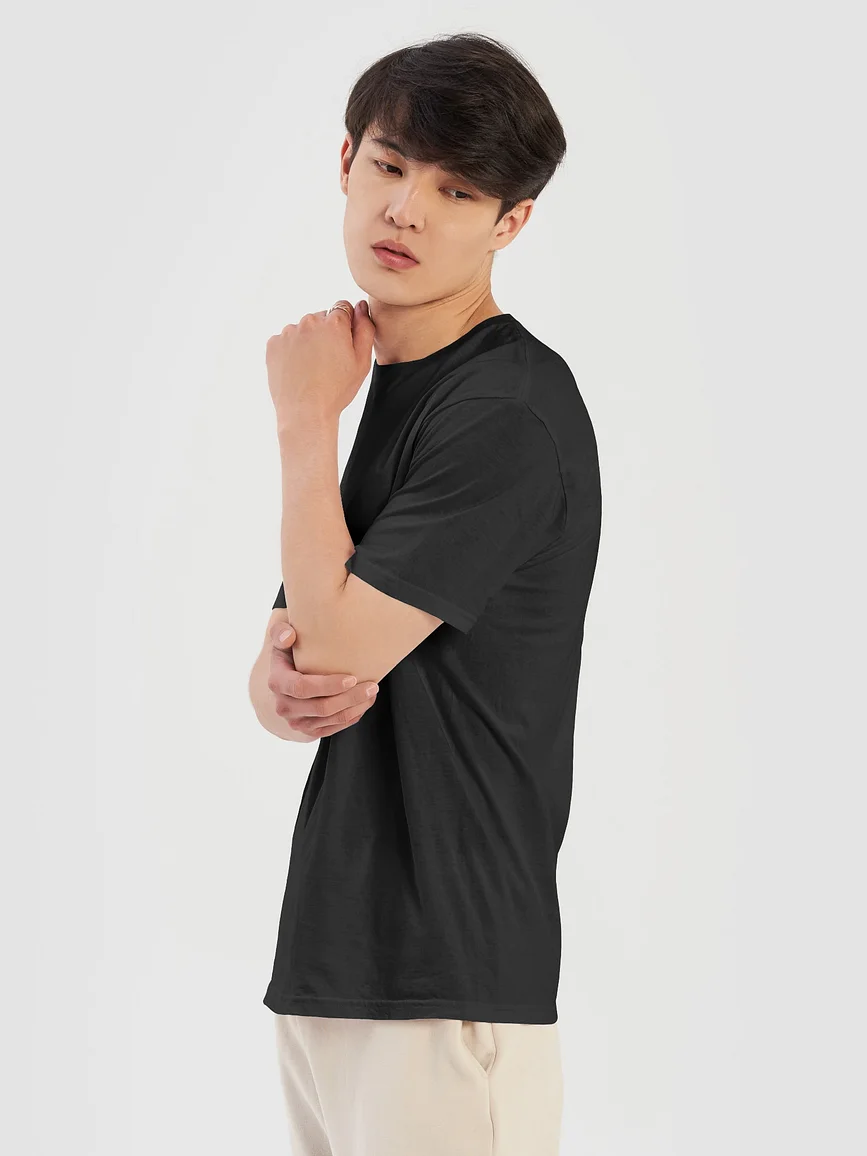How to Start Your Own Home Decor Business Online

Do you love decorating spaces, curating cozy textures, or dreaming up designs that bring a room to life?
What if you could turn that creative energy into a full-blown home decor business—without dealing with inventory, shipping, or expensive overhead?
In the past, launching a home decor brand meant renting a showroom and investing in furniture stock while navigating a competitive interior design industry.
But today, platforms like Fourthwall are changing the game.
With print-on-demand tools and built-in eCommerce support, creators can establish a professional online store that reflects their style without needing a warehouse or hiring a team.
Whether you're a DIY artist, digital illustrator, or aspiring interior designer, this guide will walk you through every step of the journey by showing you how to use Fourthwall to design custom products and turn your creative vision into a profitable home decor business.
Challenges of Starting an Online Home Decor Business

Turning your eye for style into a real home decor business sounds like the dream—and it totally can be.
But like any creative hustle, launching your own online store comes with a few real-world bumps to expect along the way.
The truth is, the decor market is packed. Everyone’s trying to create that perfect vibe, and with so many trends, products, and aesthetics out there, standing out takes more than just cute home decor items.
Plus, a lot of people love the DIY route, which means you’ll need to show why your designs are worth the click.
From building a solid brand identity to actually getting eyes on your stuff through social media, growing a business in this space means wearing a lot of hats—even when you'd rather be designing throw pillows.
Here’s what you might run into:
- Difficulty getting noticed in a crowded home decor scene
- DIY culture makes it harder to convince people to buy instead of make
- Your brand needs a clear vibe and consistent aesthetic
- Pricing and fulfillment are tricky when you’re just getting started
- You’ll need to hustle online to get traffic and build trust
That said, platforms like Fourthwall were built for creators just like you, so you can focus on making beautiful things while it handles the not-so-fun stuff like printing, shipping, and running your store behind the scenes.
Trends Shaping the Future of Home Decor in 2025
Staying on top of the latest home decor trends isn’t just about aesthetics; it’s a smart way to fine-tune your business plan while staying relevant in a fast-moving industry.
Whether you're creating your first collection or expanding your online store, understanding what’s trending in interior design gives you a huge advantage in crafting pieces that resonate with your audience and stand out in a competitive market.
Here are five influential trends shaping the future of home decoration and how you can use them to inspire your next drop:
Sustainable Decor

Eco-conscious design is no longer aniche; it’s a priority. Customers are seeking meaningful products that don’t harm the planet.
Consider offering upcycled artwork, refillable candles, or home accessories made with bamboo textiles and organic materials.
Leaning into sustainability also gives you a strong story to tell across your social media and website, which strengthens your brand identity and builds trust.
Biophilic Design

People crave a deeper connection to nature, especially in their living spaces.
This trend focuses on decorating with natural elements; think leafy patterns, earthy color palettes, and wall art that mimics organic forms.
Products like botanical prints, stone-inspired textures, and plant-themed textiles are perfect for this look and pair beautifully with soft, natural furniture accents.
Maximalism

Maximalism celebrates bold colors, clashing patterns, and expressive design choices in a big way.
This is a great opportunity to offer wall art, pillows, and throws that feature saturated tones, playful graphics, and eclectic visuals.
If your niche thrives on individuality and self-expression, this trend is your playground.
Japandi

This hybrid trend seamlessly blends Scandinavian simplicity with Japanese elegance, characterized by clean lines, warm wood tones, and intentional minimalism.
It’s ideal for entrepreneurs aiming for a calm, timeless brand presence.
Products like soft-toned prints, furniture with clean profiles, or subtly patterned textiles align well with this aesthetic and offer long-term appeal.
Tech-Integrated Decor

The future is interactive.
Home decor is getting smarter, and tech-infused pieces like QR code art, light-reactive wall prints, and sound-responsive accessories are gaining traction.
This trend creates space for innovative business ideas that blur the line between digital and physical, offering something unique to customers who appreciate innovation.
6 Steps to Launching Your Home Decor Business Online
You’ve got the vision, the style, and the passion. Now it’s time to turn that into a business that actually works.
Starting your own home decor brand might feel overwhelming at first, but with the right steps, it’s more doable than you think.
In the guide below, we’ll break it all down into six clear, actionable steps to help you launch with confidence.
From defining your brand’s vibe to setting up your storefront and promoting it like a pro, this is everything you need to get started and start selling.
Step 1: Define Your Niche and Signature Style

Before you launch your online home decor store, the first thing you need is a clear vibe.
Don’t try to sell products that speak to every possible taste; your brand identity should feel like an extension of your personal style.
Whether you lean toward earthy neutrals, bold maximalist patterns, boho textures, or sleek modern lines, the goal is to pick a niche that excites you, not just one that’s trending.
This will help shape everything from the home decor items you create to the type of customer you attract.
If you really want to stand out, start by building a mood board on Pinterest or Canva with 2–3 complementary aesthetics. This will give your website, social media, and product designs a cohesive look.
Think of your niche as the foundation for your brand, helping you not only showcase your creativity but also tailor your marketing strategy to the right audience.
With the right focus, you'll be more than just another decorating account—you'll be a go-to destination in the online home decor space.
Step 2: Name Your Brand and Secure a Domain

Your brand name sets the tone for your entire home decor business, so make it memorable, easy to spell, and reflective of your style.
Just be careful not to choose something too narrow; you want your name to leave space for growth as your online store expands into new collections or product categories.
Here are a few different approaches that work well:
- Descriptive + Conceptual: Nest & Nook, Cozy Theory
- Evocative + Abstract: The Calm Collective, Hearth & Frame
- Minimal + Modern: Still Home, Found Studio, Formed Living
- Your Name + Decor Spin: Studio Maren, Decor by Elise
If you're using an eCommerce builder like GoDaddy or Namecheap, you’ll want to check that your domain name is available (ideally a .com).
However, if you’re using Fourthwall, the platform includes a free custom domain tied to your homepage and storefront, making it easy to launch a professional-looking home decor store without incurring additional costs.
This also means your brand looks legit from day one, with a domain that's easy to share across your social media, email list, and marketing materials.
Step 3: Set Up Your Fourthwall Storefront

Once you’ve named your brand and secured your domain, it’s time to bring your vision to life by launching your own online home decor store, and Fourthwall is hands-down one of the best platforms to do it.
Built specifically for creators, Fourthwall gives you everything you need to start selling your home decor items without the hassle of complicated coding, external apps, or inventory management.
Setting up your storefront is fast, intuitive, and completely customizable to match your brand’s aesthetic.
You can choose from clean, high-converting themes designed to showcase your products, whether you're featuring cozy textiles, minimalist wall art, or bold home accessories.
Use the drag-and-drop editor to feature collections on your homepage, build out an engaging “About” section to tell your story, and make your brand feel personal and approachable from the very first click.
Here’s what makes Fourthwall stand out:
- An integrated product designer to upload and preview your artwork on all types of home decor products.
- Social media integrations with platforms like Instagram, TikTok, and YouTube make it easy to promote your store and turn followers into buyers.
- Flexible pricing tools that let you set your own profit margins.
- International shipping options allow you to reach customers worldwide.
- Built-in analytics to help you track sales, popular products, and store traffic in real time.
- No order minimums and no upfront costs, so you can launch with zero risk.
Whether you're launching your very first home decor venture or expanding an existing creative brand, Fourthwall makes it easy to create a professional, high-impact store that not only looks great but sells.
Step 4: Design Your First Collection

This is where your creativity meets your brand identity. Before you start uploading files, think about how each product in your collection reflects your home decor brand.
Whether your aesthetic is modern and minimal, bold and eclectic, or soft and earthy, your designs should create a cohesive story across every item you offer.
Tools like Canva, Figma, and Procreate are great for beginners to experiment with layouts and textures, while more advanced platforms like Photoshop, Illustrator, or InDesign give you full control over detail and customization.
The key is to design pieces that not only look good, but feel like you.
Once you’ve nailed your visuals, head over to Fourthwall’s product catalog and choose the home decor items that best fit your style. You can upload your artwork directly to each product and fine-tune the design placement using our intuitive design tools.
Use the mockup preview tool to see how everything will appear in your online home decor store before publishing.
Some great product categories to start with:
- Canvas and Poster Prints: Enhanced Matte Posters, Framed High-Quality Posters, and Thin Canvases are perfect for showcasing your art or photography.
- Pillows and Blankets: All-Over Print Pillow Cases, Premium Pillows, and Embroidered Sherpa Blankets make high-impact, cozy statement pieces.
- Candles and Accessories: Soy Wax Candles, Glossed Cork Coasters, and Wooden Ornaments add charm and personality to your line.
- Functional Decor: Cloth Napkin Sets, Wrapping Paper Sheets, and Table Runners help you lean into table styling and seasonal drops.
- Kitchen-Ready Items: Our Organic Cotton Aprons and Embroidered Cooking Aprons offer both style and function, making them ideal for gifting or everyday use.
Now that your designs are in place, publishing is as easy as a few clicks.
With no minimums, no inventory, and no shipping logistics to manage, Fourthwall makes it easy to focus on what matters most: creating and growing a home decor brand that feels authentic, consistent, and uniquely yours.
Step 5: Price Your Products with Confidence

Pricing doesn’t have to feel like guesswork.
If you’ve put time and heart into designing your home decor items, it’s only fair that you get paid what they’re worth.
With Fourthwall's built-in pricing tools, you can easily set your profit margins, adjust product markups, and keep track of what’s working, all without needing a business degree.
Just ensure that your pricing (whether premium and boutique or accessible and budget-friendly) aligns with your brand identity and reflects what your audience expects from your online home decor store.
Here are a few smart tips to price with purpose:
- Do your research: Browse similar items on Etsy, Amazon, or Instagram shops to see what people are willing to pay for decor that resembles yours.
- Bundle your products: Create value-packed bundles, such as a “Cozy Living Room Set” (pillow, blanket, and candle), to increase the average order value and give customers more reasons to make a purchase.
- Lead with quality: Don’t just sell on price—sell on the value your product brings. Use your product pages to highlight features like premium print quality, handcrafted details, or eco-conscious materials.
- Leave room for promotions: Build in enough margin so you can run discounts or limited-time offers without cutting into your earnings.
Step 6: Launch and Promote Your Store
You’ve built the brand, designed the products, and polished your storefront; now it’s time to let the world know you’ve officially arrived.
As with any new business, launching your home decor store with intention can make a huge difference in building momentum and attracting your first wave of customers.
Here are a few authentic, creator-friendly ways to launch with impact:
- Announce it everywhere: Share your launch across Instagram, TikTok, YouTube, and wherever your audience is active. Use countdowns, teaser posts, and behind-the-scenes content to build anticipation.
- Host a live walkthrough: Go live on TikTok or Instagram to give your audience a real-time tour of your home decor collection, talk about your inspiration, and answer questions.
- Offer a limited-time launch perk: Give early supporters a reason to shop now, like a launch-day discount, a free digital download, or bonus content with their order.
- Encourage and highlight early feedback: Ask your first buyers for quick reviews or unboxing photos, and repost them to build social proof. People trust people, and real testimonials make a big impact.
- Pin your store link everywhere: Update your bio, email signature, YouTube description, and link-in-bio tool so that new followers can easily find your store.
Remember, launching your store is just the beginning—but how you show up in those first few days can set the stage for long-term success. Celebrate it, share it, and don’t be afraid to hype yourself up—after all, you built something worth showing off.
Marketing Tips to Grow Your Home Decor Brand
Now that your online store is up and running, the next step is getting eyes on your products, and that’s where a smart, creator-driven marketing strategy comes in.
Building a strong online presence will help you attract new customers, connect with your community, and establish your home decor brand as a go-to destination for style enthusiasts.
The good news? You don’t need a huge budget to start; just some consistency, creativity, and a plan that fits your niche.
Here are some effective marketing tactics to help you sell products and grow your brand over time:
Social Media Strategies
- Use trending hashtags like #HomeDecorTok, #InteriorStyling, #DesignInspo, and #FurnitureFinds to reach new audiences organically
- Post Reels and short-form videos featuring product staging, unboxing clips, or styling tips to show how your pieces can elevate any space
- Run polls and Q&As in Stories to ask your audience what they’d like to see next, whether it’s a new pillow design or a seasonal candle scent
- Show your process—share time-lapse videos of your design work, mood boards, or packaging days to give your followers a behind-the-scenes look at your home decor business
Collaborating with Influencers
- Gift your products to home decor creators, DIY influencers, or interior designers on TikTok and Instagram to help amplify your reach
- Use Fourthwall’s affiliate tools to offer commission-based links to influencers, making it easy for them to promote your store and earn while doing it
- Partner on giveaways that help grow both of your audiences while driving traffic to your website
Remember, social media and influencer collaborations are two of the most powerful tools to get your brand in front of people who care about interior design and thoughtful home decoration.
The key is to be consistent, engage with your audience often, and showcase how your products fit into real homes. With the right approach, your home decor venture can turn casual scrollers into loyal customers.
Final Thoughts: Build a Home Decor Brand That Actually Pays Off

Starting your own home decor brand is more than just listing products; it’s about creating a brand your customers want to be part of.
And with Fourthwall, you don’t need to worry about inventory, shipping, or complicated storefronts. You bring the creativity, they handle the rest.
From automated fulfillment to custom product mockups and global shipping, Fourthwall is built to help you launch, grow, and actually profit from your passion.
Fourthwall’s Standout Features for Home Decor Brands:
- 💡 Print-on-demand with no upfront costs or order minimums
- 🛒 Customizable storefronts with themes designed to boost conversions
- 📦 Automated fulfillment (printing, packaging, shipping—all done for you)
- 🌍 Global shipping so you can reach customers around the world
- 💳 Seamless payments via Apple Pay, PayPal, Klarna, and more
- 🎁 Sell more than products—offer memberships, digital downloads, and exclusive perks
- 🖼️ Design tools for canvas prints, mugs, pillows, candles, wall art, and more
- 📲 Social integrations with TikTok Shop, YouTube Product Shelf, and Twitch Gifting
So, if you’re ready to turn your designs into something real (and something that sells), there’s no better time to start. Sign up with Fourthwall today and start designing!
FAQ: Selling Home Decor Online
Is home decor a good niche?
Yes, home decor is a highly profitable niche for creators and entrepreneurs, particularly as interior design and eCommerce continue to gain traction online.
With the right marketing strategy and solid market research, you can build a business online that sells everything from furniture to personalized decor pieces.
Whether you offer design services, DIY decorating guides, or a curated website of products, the home decor space offers endless business ideas for those willing to tailor their brand to a specific aesthetic and audience.
Do I need design experience to start a home decor brand?
Not at all. Many successful creators begin with easy-to-use platforms like Canva, which offers templates for a wide range of applications, from wall art to product labels.
You don’t have to be a professional designer—Fourthwall gives you access to mockup tools that make it easy to showcase your products in a polished, professional way, even if you’re new to design.
Can I sell to international customers?
Yes! With Fourthwall’s built-in global shipping capabilities, your online store can reach customers almost anywhere in the world.
You can customize shipping options and pricing for different regions, helping you expand your business ideas and build a truly international home decor brand.
How do I handle returns or customer service?
You don’t have to stress about logistics since Fourthwall’s fulfillment partners manage product issues and handle returns for you.
That means you can stay focused on your brand, marketing strategy, and expanding your online presence, rather than getting sidetracked by customer service or operational tasks.
















